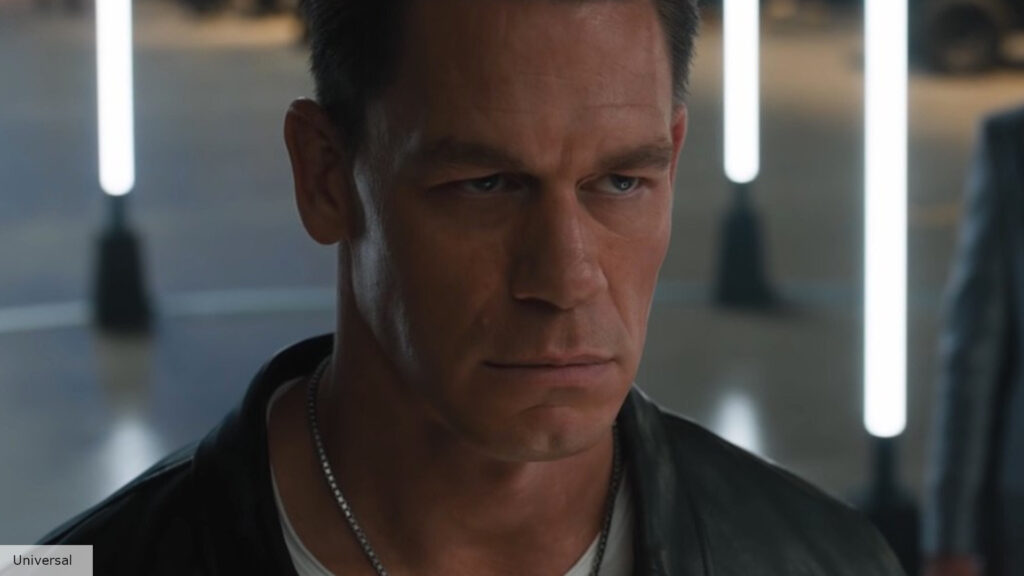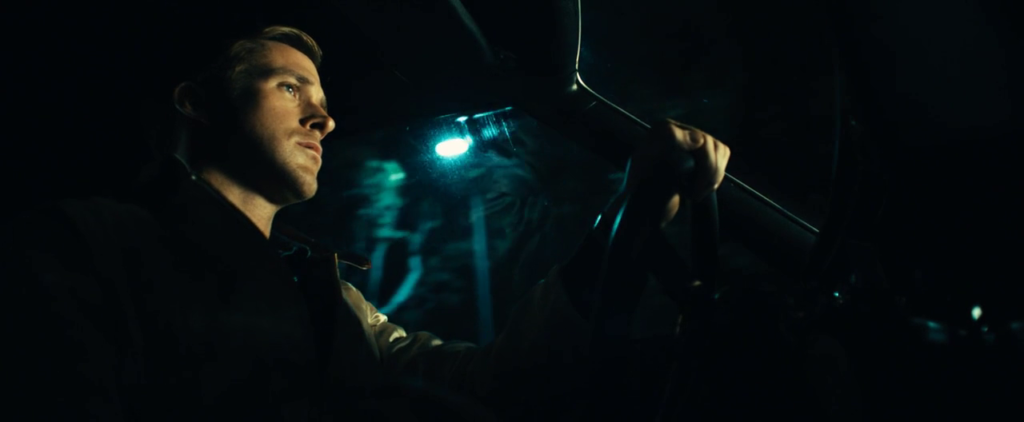Genre: Action/Revenge/Comedy
Premise: Blasting out of prison after being double-crossed by the Mastermind of a heist, a Demolition Expert uses his genius with explosives to enact revenge on the Caper Crew who set him up while simultaneously picking up the pieces of his personal life.
About: The controversial screenwriting talent, Colin Bannon, he of the many wild high concept ideas, is back with another script. This is one of two scripts Bannon had on last year’s Black List.
Writer: Colin Bannon
Details: 115 pages

Colin Bannon reminds me of Mattson Tomlin and Max Landis, two writers who unapologetically seek out big juicy concepts then proceed to write them as fast as possible.
What Bannon has going for him is that he’s the most talented of the “high concept three.” How do we know this? Cause he’s written the best script of the trio – “Birdies,” a pitch-perfect deconstruction of weirdo influencer families. It’s that script that gives me hope every time I open a Colin Bannon script. But I’ll be honest. I haven’t seen Bannon put in that level of effort since Birdies.
Let’s see if that changes with The Demolition Expert.
Gus Bender is the demolition expert on a team of heisters. We meet him with his buddy, Joey Fix, “the mastermind” of the heist, as they break into the “Mind Lab” skyscraper where the CEO, Lazlo, keeps all his most precious items.
They coordinate with Wolf (hacker) and Smoke (driver), as well as their inside man, Stick (a master pickpocket). Using their time-tested abilities, they make their way into Lazlo’s abandoned office where Gus uses a new bomb of his that doesn’t create an explosion to break into Lazlo’s vault. They quickly take 60 million dollars worth of diamonds and they’re out.
Back at the warehouse rendezvous point, where they bring the stolen items to the investor, Gus goes to grab something in the back room, and when he comes back, everyone is gone. Seconds later, a SWAT team shows up and arrests Gus, who goes to prison for ten years.
During that time, Gus plans his revenge. But you have to understand that a demolition expert’s revenge is a little different than a normal citizen’s revenge. Gus is going to blow up everyone who screwed him over, one by one.
He starts with Lazlo’s personal assistant, Travis, who he blows up in a bank. He then moves to the investor, Bank, and blows up his entire casino. He then sets his sights on Smoke, who’s become her own tech CEO. But it’s clear that Gus isn’t getting any satisfaction from these kills. The only person he truly cares about blowing up is Joey. But first he wants to find out why Joey made him the fall guy.
It turns out that Joey will be selling a violin he stole from Lazlo (they waited 10 years for the heat to die down) at a high-end private auction in a few days. Getting to that auction is the only chance Gus may have to enact his ultimate revenge, a revenge that will make even Oppenheimer jealous.
Welcome to one of the wackier screenplays I’ve read all summer.
This one is ka-raaaaazy with a capital “K.”
Where do I begin?
Let’s start here. When Gus is in prison, he gets beat up every day by his giant cellmate. And, every beating, he gets a tooth knocked out. He collects these teeth in a little tin. We have no idea why.
When he finally gets out, he tricks Travis into thinking they’re going to take down Joey together. But Gus only has revenge on his mind. So, while they’re driving, Gus guns their car into a bank, bangs Travis’s head against the dashboard dozens of times until all his teeth are gone. Then Gus brings out the tin of his teeth from prison and shoves them into Travis’s mouth. He then jumps out of the car, leaves the building, detonates the car bomb… ALL SO THAT THE POLICE WILL IDENTIFY TRAVIS AS GUS BECAUSE HE HAS GUS’S TEETH.
I don’t know if that’s the most genius thing I’ve ever read or the most ridiculous, lol. But it’s a great indication of what kind of script you’re getting into with The Demolition Expert.
There is no shortage of zaniness here.
When Gus finds Wolf, it turns out she’s started a mindfulness app that measures your resting heartbeat to keep you “mindful.” So what does Gus do? He hooks a bomb up to the app (somehow ahead of time), and then corners her, explaining that if her heart rate exceeds 183, the bomb blows up. This makes Wolf nervous, so her heart rate keeps rising, which Gus draws her attention to, which makes her heart rate rise even more. And now it’s a desperate race to calm herself down.
Later still, Gus finds Smoke, the getaway driver, who is in the middle of a NASCAR race. He hacks into her headset and explains that he’s rigged her car to blow up if it goes below 200mph. “It’s like SPEED,” he tells her. “But faster.” He then explains that her only salvation is to leave mid-race and get to Santa Monica, never dropping below 200 mph. An impossible feat that she attempts to achieve anyway.
Again, I don’t know what to make of these choices. I don’t want to be disrespectful but they often feel like something a 16-year-old would come up with. Maybe that’s good. Cause that’s the demo you want coming to the movie. But even when you’re writing for younger people, the craziness has to have some level of sophistication to it.
Look at Pixar movies. They’re written for 10-year-olds. But if 10-year-olds had written those movies, they’d be packed with a bunch of farting and burping and silly ideas that didn’t make sense.
I mean, Michael Bay makes an appearance in this movie. Or there’s a moment where a demolition expert, Mary Beth, approaches Gus and tells him that they did the same thing to her. She then offers him to join her on an island for the rest of his life. A woman he’s known for 30 seconds. That’s not sophisticated writing. That’s first draft writing.
That careless recklessness permeates the script.
And yet, to Bannon’s credit, it never totally derails the experience. There’s just enough of a “good time at the movies” feel to the script that you overlook its weaknesses. This is clearly Bannon’s modern-day take on Speed and it’s probably how a modern-day version of Speed would look like. There wouldn’t just be one scenario (a bus that couldn’t drop below 50 mph). The social media generation needs more stimuli, which is what The Demolition Expert gives you. It entertains you with multiple bomb situations.
Every audience member has their own threshold for suspension of disbelief. Some of us need airtight logic to keep our diselief going. Some of us only need jokes and silliness. The Demolitions Expert is much closer to the latter than the former. But, then again, so was Speed. So mileage will vary here.
[ ] What the hell did I just read?
[ ] wasn’t for me
[x] worth the read
[ ] impressive
[ ] genius
What I learned: Scenes that cut between more than two characters involved in a complex situation that needs a lot of description are going to leave a lot of readers cold. These scenes work great on screen. But on the page, they require a lot of concentration to follow. It’s more about us figuring out what’s going on than it is about us being entertained. So this opening heist scene in The Demolition Expert was work to me. It was not enjoyable. I prefer simplicity. The opening scene in Drive covers similar subject matter but it focuses on one singular character in one singular situation – a getaway driver driving away.

Obviously, in Mission Impossible and Fast and Furious type movies, you will sometimes need to write these scenes. But I encourage writers to both simplify them and zero in on the most entertaining component of the scene and feature that. We’d rather read about Ethan Hunt dangling from wires in a secured CIA computer room where one bad movement gets him and his team caught than cutting between 10 different characters all chiming in, where we only understand half of what all of them are contributing. Reading should NEVER FEEL LIKE WORK. It should ALWAYS FEEL LIKE PLAY. Let that mantra guide you.

